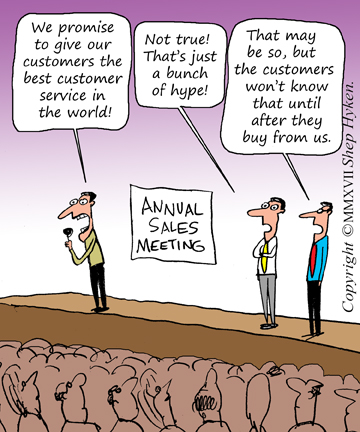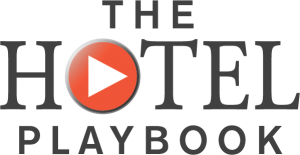Orignally published by: Shep Hyken, On: hyken.com
 Just imagine if you were the Director of Sales for a private jet company. Would that be a dream job?
Just imagine if you were the Director of Sales for a private jet company. Would that be a dream job?
Jordan Zabel deals with high-end customers who expect high-end customer service because he is the Director of Sales for Jet Linx, a private jet company that offers their services to corporate and private members. As you might imagine, anyone that can afford to fly in a private jet has very discerning taste . . . and often along with it, sky-high expectations.
Jordan knows exactly what it takes to acquire these demanding customers. He needs to sell an excellent product while at the same time delivering the highest level of customer service. And, once the sale is made, he knows what it will take to keep those customers, which is to maintain that same level of service he demonstrated through the sales process, while maybe even increasing the altitude a bit.
So, all of this seems like common sense, right? A high-priced service usually is accompanied by an excellent customer experience. Just think of the level of customer care that hotels like the Ritz-Carlton demonstrate. So what is the challenge for people who deal with these high-end clients like Jordan Zabel does?
Zabel says, “Too many times a company’s marketing propaganda just doesn’t match the customers’ experiences after the sale. It’s all just hype. Hot air. At Jet Linx, I always want my customers to know their decision to do business with us was a good one, anytime they think of us.”
In other words, Zabel wants to live up to the promises and expectations that his marketing initially created for his prospects-turned-customers. After the sale, he wants his customers to continuously self-confirm that they made the right decision in choosing him and Jet Linx in the first place.
The key word here is self-confirm. What are you doing before, during and after the sale that continuously reinforces the customer’s choice to do business with you? If you have good sales skills, sure, that can get you some business to start. But what about getting those customers to return, time after time? That’s the key to ongoing success and a steady revenue stream. It’s all in what happens after the customer’s buying decision that counts. It’s about delivering amazing customer service after the sale.
I’ve written and talked about Joey Coleman’s concept about The First 100 Days. What happens during the first 100 days after the sale can confirm that the customer made a good decision to work with you at the beginning. We want our customers, at any time, to always be self-confirming their decision. When they do, it will lead to the next sale, and the next. It builds a stronger relationship. It potentially leads to customer loyalty and maybe even evangelism, where your customers share their positive experiences about you with their family, friends and colleagues. That’s the power of delivering a level of customer service that self-confirms a customer’s choice to do business with you!
Shep Hyken is a customer service expert, keynote speaker and New York Times bestselling business author. For information contact or www.hyken.com. For information on The Customer Focus™ customer service training programs go to www.thecustomerfocus.com. Follow on Twitter: @Hyken























